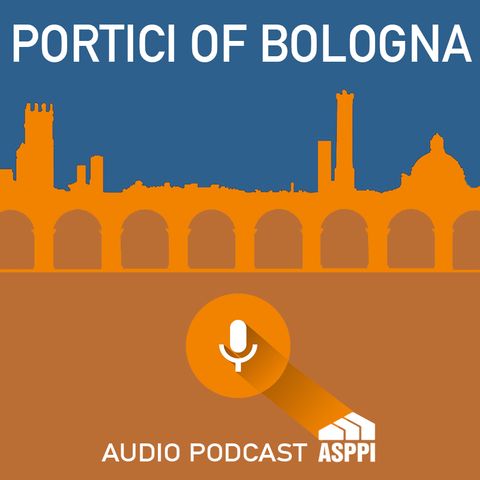Portici di Bologna. Via Zamboni (English)

Download and listen anywhere
Download your favorite episodes and enjoy them, wherever you are! Sign up or log in now to access offline listening.
Description
Via Zamboni, is the heart of the University of Bologna: it is the oldest university of the Western world, believed to date back to 1088. The street begins at Piazza...
show moreThe street begins at Piazza di Porta Ravegnana and ends at Porta San Donato.
Buildings and porticoes of different styles and time periods are on the sides of a street anciently called “San Donato” which until the 1200s was an area of open fields. It was thanks to the powerful Bentivoglio family that it became important architecturally as they chose the area to build their palazzo, completely destroyed in a revolt against the family at the beginning of the 1500s.
The name of the street was changed into Zamboni, in 1867 to commemorate Italian patriot Luigi, student at the University of Bologna and probably one of the creators of the Italian flag.
From Piazza di Porta Ravegnana and walking along Via Zamboni you reach a small square with to its right the brick colonnade of palazzo Bianchetti, at the far end the façade of Palazzo Malvasia and to the left the church of San Donato, with a frescoed façade of architectural perspectives. Next to the church is an archway once the entrance to the Jewish Ghetto in the 1500s, with as keystone a sculpted mask with an open mouth. It is an original wine fountain connected to Palazzo Malvasia via a small pipe. It was the custom of the family on the occasion of an important reception or when a family member was elected to an important political office to pour wine from the mask, like from a fountain, in the street and then watch the people scramble to get a drink.
The street has porticoes on both sides, at times with pilasters others with different styled columns and capitals. To the left is palazzo Malvasia-Pannolini, followed by Palazzo Magnani, now a picture gallery, where in the main hall is a remarkable frescoed frieze by the Carracci. To the right palazzo Malvezzi De' Medici now seat of the Città Metropolitana di Bologna, so grand that via Zamboni isn't wide enough to allow its portico natural light, and for this it is called the "dark portico".
Natural light brightens the façade of the Basilica of San Giacomo Maggiore, a church dating to the 1300s and in which one can see the Bentivoglio Chapel, one of the most remarkable creations of the Early Renaissance of Bologna, and the Poggi Chapel of the 1500s by Pellegrino Tibaldi. Extremely elegant is the basilica's portico on via Zamboni, dating to the 1500s along which is the entrance to the Church of Santa Cecilia with splendid frescoes by the most renowned artists of the School of Bologna of the early 16th century.
The walk brings you to Piazza Verdi, enclosed by the buildings of the ancient Bentivoglio stables and by the Teatro Comunale (theatre), built on the ruins of where the ancient family palace used to be. The theatre by architect Antonio Galli di Bibiena in 1750, was completed with its façade only in 1937, planned with the wide terrace to allow the Fascist hierarchs a full view of the square.
Without a street portico is palazzo Paleotti originally a Medieval block and now the library and media centre of the University.
In what in the 1500s was the palazzo of the very powerful Cardinal Poggi, is now the Alma Mater of the University of Bologna. When still a private palace on the San Donato road at the beginning of the 1500s the Cardinal was granted permission to enlarge and embellish the property with plans probably by architect Tibaldi who followed the style and fashion of the city palazzi.
The building was refurbished and made even bigger to make it into the seat of the Institute of Sciences (Istituto delle Scienze) in 1711 with a project by Francesco Dotti, also the architect of the Sanctuary of the Madonna di San Luca. He added the library and a slightly projecting section of three arches to the portico.
During the 1800s a connection to palazzo Malvezzi was opened and it was later necessary to plan two new wings for the sides of the original palazzo Poggi and the Library, important additions which unified the front of the building block.
After palazzo Poggi there are other buildings with and without porticoes which go all the way to the gate of Porta San Donato. This gate was originally built in the 1200s but reworked over the centuries and in part demolished in the 1950s to improve traffic movement.
Information
| Author | ASPPI |
| Organization | ASPPI |
| Website | - |
| Tags |
Copyright 2024 - Spreaker Inc. an iHeartMedia Company

Comments